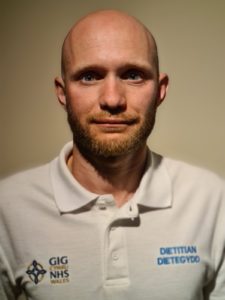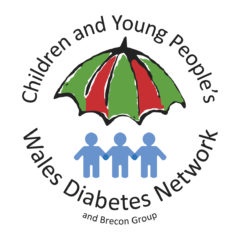A review of ISPAD 2020
 Tom Coles, dietitian with the Cardiff & Vale paediatric diabetes team, recently attended the ISPAD Conference. We asked Tom for his thoughts on the conference, and to share some of the things he learned.
Tom Coles, dietitian with the Cardiff & Vale paediatric diabetes team, recently attended the ISPAD Conference. We asked Tom for his thoughts on the conference, and to share some of the things he learned.
I want to say a big thank you to the Network for funding my attendance at the 46th Annual (virtual) ISPAD conference. I found the event a useful update on current best practice and it has brought about thought provoking questions and discussions which we should be having in our MDT’s and our Network.
I have taken on board several facts which I intend to take forward into my practice and share with colleagues.
As a dietitian I’m particularly interested in how consuming fat affects diabetes management. Fat increases gluconeogenesis, which then increases blood glucose levels.
Practical tips about fat:
- ISPAD recommends an addition 15-20% insulin for high fat, high protein meals – as a starting point.
- For a high fat meal (>30g fat) consider increasing insulin by 30%.
- Olive oil slows gastric emptying more than butter. However, the literature is not consistent throughout.
- Hybrid closed loop systems still struggle to manage high fat meals, and some seem to manage it better than others. This is something to consider when recommending pumps to families.
- Teams need to consider actively recommending increased boluses for high fat, high protein meals.
When it comes to treating hypos, a nasal glucagon spray has been developed. It is likely to become commonly used and is as clinically effective as injections, even if the patient has a cold. It is a lot easier to administer by both trained and untrained individuals when compared against the IM injection.
There were several presentations about diabetes technology. One of the key overarching points is that a 5% increase in wearing CGM / Flash will have clinically meaningful outcomes.
There were some discussions about technology and wellbeing. It was noted that is has an impact on staff. A recent study indicated 54% of American doctors showed 1 or more symptoms of burnout themselves! The conclusion was this was due to more time needed to analyse complex data and increasing patient numbers.
Other data related to technology shows that on average:
- 50-71% of patients don’t upload in between clinics
- 54% of patients never change pump settings between visits to the MDT
- 29% of patients don’t amend bolus doses to correspond with CGM data
This probably indicates a need for better education and patient activation.
That figure of doctors exhibiting signs of burnout also raises the question of whether we are discussing professional burnout between ourselves and how we try and protect the wellbeing of staff.
Thank you Tom for sharing this update.

